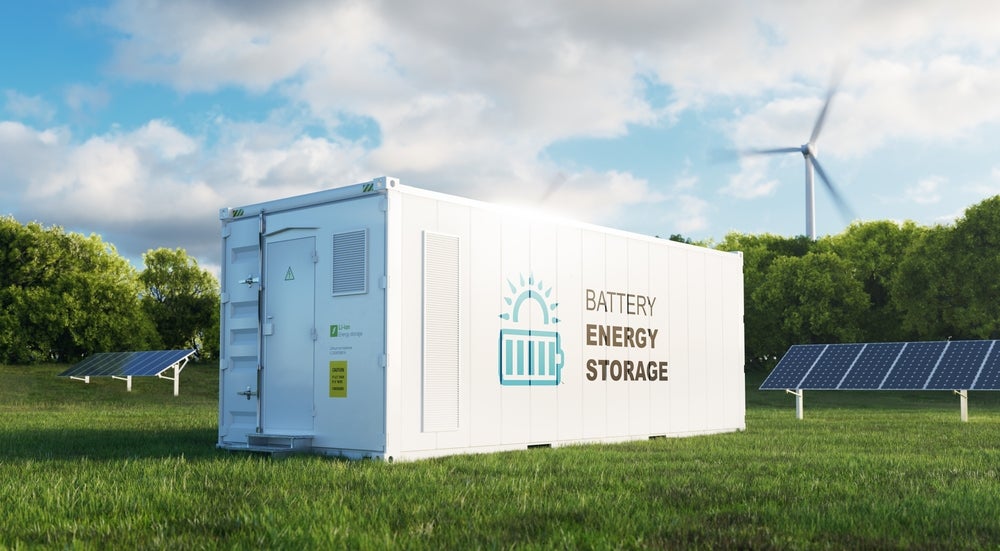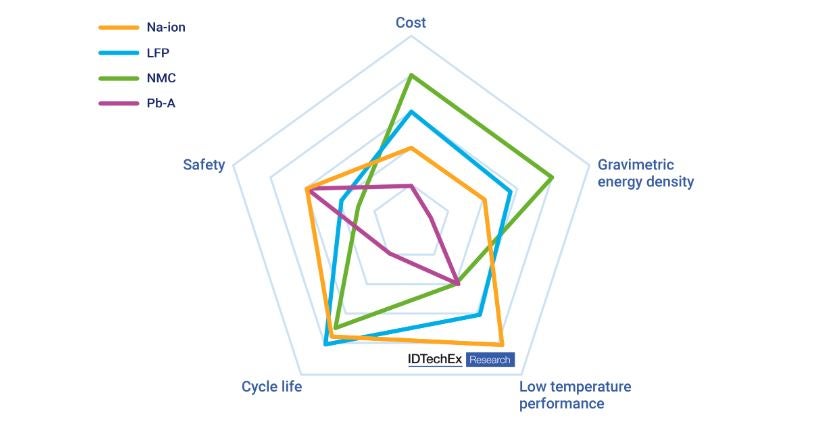
A recent report by IDTechEx sheds light on sodium-ion (Na-ion) batteries, indicating potential benefits in the energy storage sector.
The report outlines considerations such as cost, safety, sustainability, and performance in comparison to traditional lithium-ion batteries.
According to Shazan Siddiqi, Senior Technology Analyst at IDTechEx, sodium-ion batteries are in development due to their use of widely available and cost-effective materials.
Sodium, more abundant than lithium, offers an economical alternative. Siddiqi notes that these batteries can use aluminium for the anode current collector, potentially reducing supply chain risks compared to copper used in lithium-ion cells.
Comparison of different cell chemistries

Safety concerns related to lithium-ion batteries, typically stored at around 30% state of charge, are addressed by sodium-ion batteries, which can be stored at zero volts, reducing risks during transportation. Additionally, the higher flashpoint of electrolytes in sodium-ion systems decreases flammability risks compared to lithium-ion battery systems.
The manufacturing process for sodium-ion batteries closely resembles that of lithium-ion, enabling integration into existing lithium-ion battery production lines. Despite a lower energy density compared to high-energy lithium-ion cells, sodium-ion batteries approach the energy density of high-power lithium iron phosphate cells.
How well do you really know your competitors?
Access the most comprehensive Company Profiles on the market, powered by GlobalData. Save hours of research. Gain competitive edge.

Thank you!
Your download email will arrive shortly
Not ready to buy yet? Download a free sample
We are confident about the unique quality of our Company Profiles. However, we want you to make the most beneficial decision for your business, so we offer a free sample that you can download by submitting the below form
By GlobalDataThe cycle life of sodium-ion cells is reasonable in certain configurations, and they reportedly exhibit high-power characteristics of approximately 1000 W/kg, surpassing NMC and LFP cells.
Moreover, sodium-ion batteries show superior low-temperature performance.
Concerns about sodium’s heavier atomic weight compared to lithium are acknowledged, but it’s emphasised that energy density is primarily defined by electrode materials and other components, leaving room for potential advancements in sodium-ion batteries in the future.
A notable aspect of sodium-ion batteries is their cost-effectiveness. At scale, it’s estimated that a sodium-ion battery with a layered metal oxide cathode and hard carbon anode could yield a material cost reduction of 25 to 30% compared to an LFP (lithium ferrophosphate) battery. The replacement of lithium and copper with more affordable sodium and aluminium contributes significantly to this cost reduction.
While sodium-ion batteries may not be a universal solution, the IDTechEx report suggests they will complement, rather than displace, existing and future lithium-ion technologies in various applications. As the energy storage industry evolves, sodium-ion batteries emerge as a pragmatic option, offering a combination of economic viability, safety, and sustainability.
Northvolt develops new sodium-ion battery
Benefits of LFP batteries for EVs







